Carl Zimmer's Blog, page 68
March 30, 2011
Xtranormal Inclusive Fitness Debate: Oh Frabjous Day!
I'm a big fan of Xtranormal movies. And I write, among other things, about big debates in evolutionary biology. So this creation, from Jon Wilkins, a biologist at the Santa Fe Institute, is the essence of awesomesauce.

The Tangled Bank is "spectacularly successful"–Quarterly Review of Biology
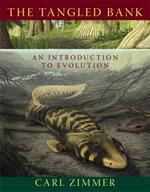 The Quarterly Review of Biology delivers a rave for The Tangled Bank: An Introduction to Evolution. Daniel McShea of Duke University writes:
The Quarterly Review of Biology delivers a rave for The Tangled Bank: An Introduction to Evolution. Daniel McShea of Duke University writes:
This is the first textbook I have seen by a professional science writer. If this is a sort of experiment in textbook publishing, it is a spectacularly successful one…The result is an introduction to the field that is not only accurate and up to date, but—of course—well written. How important is the prose in a textbook? For students, lively versus leaden, or clear versus cryptic, can be the difference between understanding and not, between being turned on to a field and being turned off. For what it is worth, I solicited help for this review from a biologically inclined high school student, who read a few chapters and reported it to be both clear and engaging….In summary, this is an excellent textbook, one that ought to be—and will be, I predict—widely adopted.

March 29, 2011
Tattooed scientists are taking over!
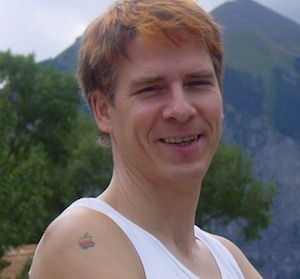 Christof Koch is one of the world's leading experts on consciousness. A longtime professor at Caltech, he's just become the chief scientific officer at the Allen Brain Institute, an innovative research center that was funded with $100 million from Microsoft's Paul Allen. The institute has spent the past eight years building remarkably detailed, three-dimensional atlases of mouse brains. Now, as Koch explains to Nature, he will use those atlases to launch an ambitious new project:
Christof Koch is one of the world's leading experts on consciousness. A longtime professor at Caltech, he's just become the chief scientific officer at the Allen Brain Institute, an innovative research center that was funded with $100 million from Microsoft's Paul Allen. The institute has spent the past eight years building remarkably detailed, three-dimensional atlases of mouse brains. Now, as Koch explains to Nature, he will use those atlases to launch an ambitious new project:
The idea is to focus on one or two behaviours — how we see, for instance, or smell, or remember — and ask how the relevant information is encoded, represented and transformed to give rise to behaviour.
The challenge is a bit like creating the Thirty Meter Telescope, which is going to be built on top of Mauna Kea, Hawaii, in the next decade, at a cost of roughly $1 billion. There you have a couple of hundred people who are all working toward a common goal.
Neuroscience hasn't had something like that, but the time is right to bring all these resources to bear ...
Parasite Rex Redux: Now with a new epilogue
The book has thrived ever since. Recently, my publisher decided to put out a new paperback edition, to celebrate the ten year anniversary of the original paperback. I've written an epilogue for ...
March 28, 2011
Springtime Yammerings
I'll be giving public talks fairly regularly for the next few months, partly due to the publication of A Planet of Viruses. Here's an updated list of my talks. (If you'd like me to give a lecture or appear on a radio show, please get in touch.)
March 31, 7 pm EST: Dr. Kiki's Science Hour. This is a web-based television show normally hosted by Kiki Sanford. Kiki's on maternity leave, so I'll be chatting for an hour with guest host Brian Malow.
April 5, 7 pm, New Haven CT: The Ordinary Evening Reading Series. Come to the dive bar extraordinaire, The Anchor, to hear me talk about viruses, and Annie Murphy Paul talk about her book, Origins: How the Nine Months Before Birth Shape the Rest of Our Lives, in which she explores how life in utero shapes life ex utero.
April 7, 4 pm, Philadelphia: University of Pennsyvlania Center for Neuroscience and Society: "Soul Made Flesh: The Origin of Our Brain-Centered World"
April 9, 10:45 am, New York, Northeast Conference on Science and Skepticism My talk will be on a suitably skeptical note: "Viruses: Believable Myths and Unbelievable Reality"
April 13, 5:30 pm. Manchester CT: Connecticut Association of Biology Teachers. ...

Great science books for high school students: The hive-mind speaks
Over the weekend, I was contacted by Melissa Townsend, an Arizona high school teacher, with this question:
Getting ready to assign spring reading to my students. What are your favorite non-fiction science books a HS kid can handle?
It's an excellent question–there are some books that can open up the mind of a teenager, and leave an impression that lasts a lifetime. But when I got Townsend's request, I was traveling to Washington to talk on a panel about blogging, so I was a bit scatter-brained. I therefore tossed the question out to the hive mind. When I read the responses, many of them made me think, "Yeah, what she said!"
Here is a selection of the answers. Add your own in the comment thread; I can update the list here accordingly.
The Immortal Life of Henrietta Lacks, by Rebecca Skloot. (This one was mentioned so often Townsend decided to go with it.)
Wonderful Life: The Burgess Shale and the Nature of History, by Stephen Jay Gould
The Diversity of Life, by Edward O. Wilson
Under a Lucky Star, by Roy Chapman Andrews
The Double Helix: A Personal Account of the Discovery of the Structure of ...
March 26, 2011
Science Ink: Here's the cover!
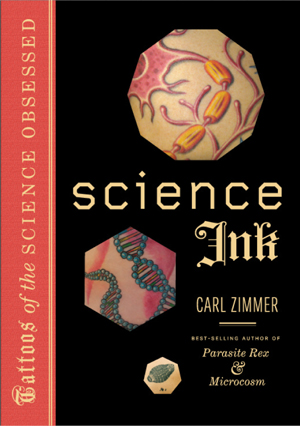 There's now a page in Sterling's fall catalog for my book of science tattoos. Here's the cover. You won't be able to appreciate its full die-cut splendor, however, till you hold it in your hands when it comes out in October 2011. More details to come!
There's now a page in Sterling's fall catalog for my book of science tattoos. Here's the cover. You won't be able to appreciate its full die-cut splendor, however, till you hold it in your hands when it comes out in October 2011. More details to come!

March 25, 2011
The Mere Existence of Whales: The Scientists Answer Your Questions
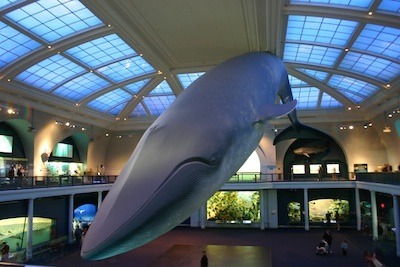 Recently I blogged about how the mere existence of whales might be an important clue to treating cancer. That post has drawn many readers, and many questions in the comment thread.
Recently I blogged about how the mere existence of whales might be an important clue to treating cancer. That post has drawn many readers, and many questions in the comment thread.
Happily, the authors of the review I described–Carlo Maley of the University of California, San Francisco, and Aleah Caulin of the University of Pennsylvania–have joined the thread. They've answered the first set of reader questions and promise to come back to respond to the rest. Further proof of the majesty of blogs…
The Valley of the Teenagers: My new brain column for Discover
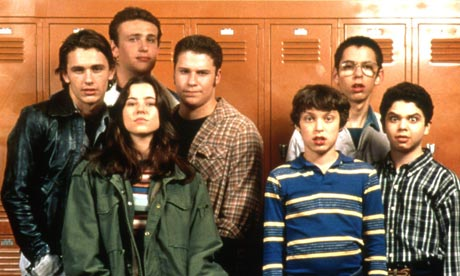 When you're a teenager, it seems like nobody understands you. And once you're finished being a teenager and get to observe them as an adult, you have to wonder what on Earth is going through their heads. In my new column for Discover, I gingerly step into the teenage mind, exploring what neuroscientists are learning about how their brains work. Teenagers may do things that seem crazy and/or stupid, but that doesn't mean they themselves are crazy or stupid. The teen years turn out to be a unique phase of mental life, when we tally up the rewards and costs of our choices with a kind of math that you won't find in the heads of children or grownups. Check it out.
When you're a teenager, it seems like nobody understands you. And once you're finished being a teenager and get to observe them as an adult, you have to wonder what on Earth is going through their heads. In my new column for Discover, I gingerly step into the teenage mind, exploring what neuroscientists are learning about how their brains work. Teenagers may do things that seem crazy and/or stupid, but that doesn't mean they themselves are crazy or stupid. The teen years turn out to be a unique phase of mental life, when we tally up the rewards and costs of our choices with a kind of math that you won't find in the heads of children or grownups. Check it out.

March 23, 2011
Inclusive Fitness: Return to the Wrestling Ring
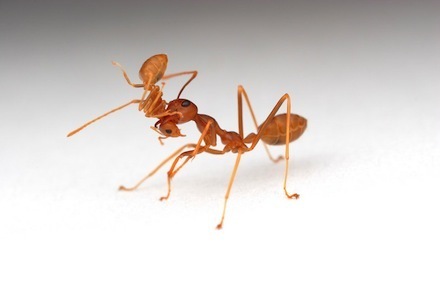 Last summer I wrote in the New York Times about a controversy over one of the most influential concepts in the recent history of evolutionary biology. Known as inclusive fitness, it basically says that helping relatives can be a good way to pass on your genes, because they've got your genes too.
Last summer I wrote in the New York Times about a controversy over one of the most influential concepts in the recent history of evolutionary biology. Known as inclusive fitness, it basically says that helping relatives can be a good way to pass on your genes, because they've got your genes too.
In August, Nature published a lengthy paper by Martin Nowak, E.O. Wilson, and Corina E. Tarnita in which they argued that inclusive fitness was mathematically flawed and basically superfluous. I had no trouble finding other scientists who were ready to say all sorts of scathing things about Nowak et al. I'm no fan of ginning up fake debates, but when somebody says, "This paper, far from showing shortcomings in inclusive fitness theory, shows the shortcomings of the authors," the story writes itself.
Seven months later, Nature has finally published some "Brief Communication Arising" letters from some of these critics. The first letter alone has 137 co-signers.
Their ranks include plenty of major players in the field of evolution (including John Alcock, Tim Clutton-Brock, Stephen Emlen, Paul Sherman, Mary-Jane West Eberhard, and Richard Wrangham). The tenor of the letters is more dignified than the comments I ...
















